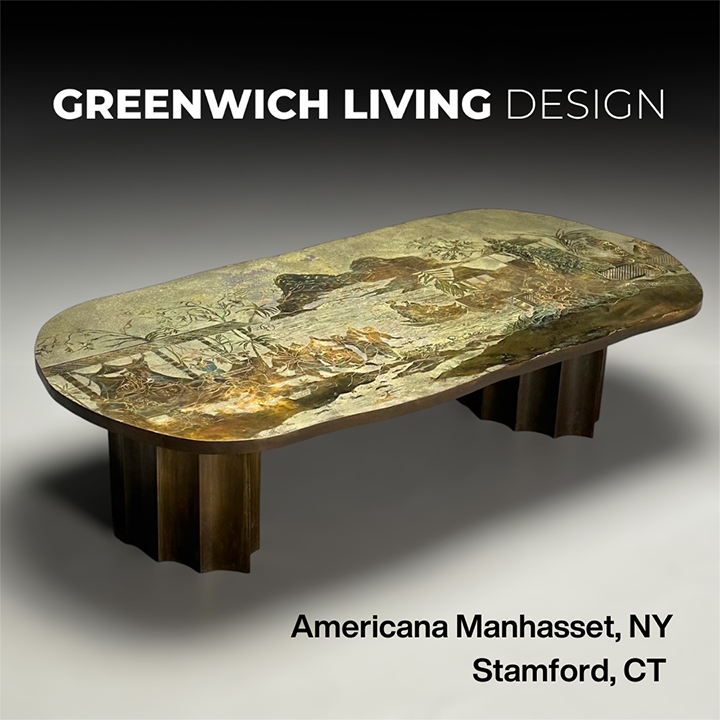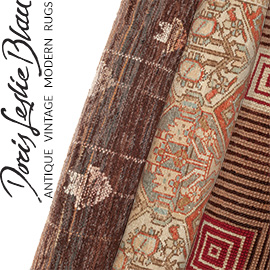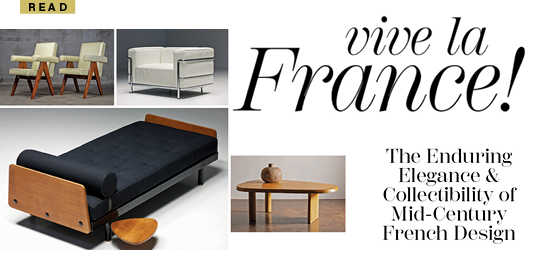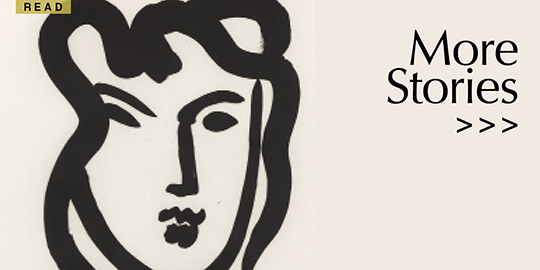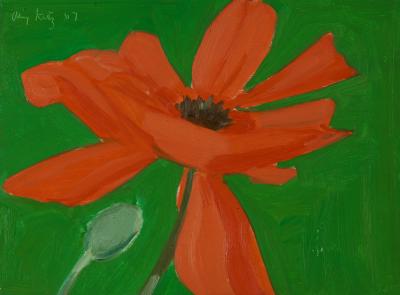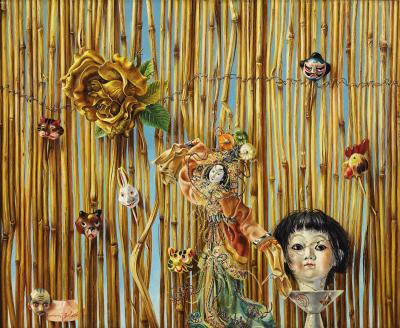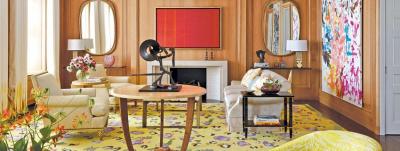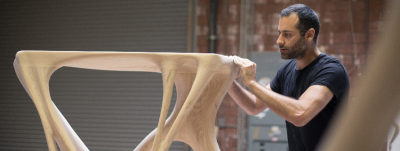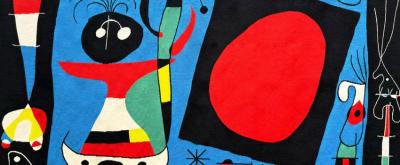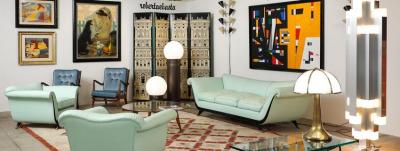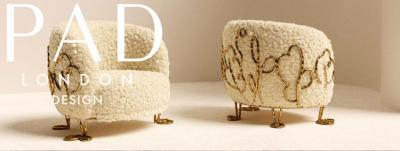American Encounters: The Simple Pleasures of Still Life
This archive article was originally published in the Anniversary 2015 issue of Antiques & Fine Art magazine.
A bouquet, a dusty old book, or a modest harvest laid out on a table would have been familiar sights for many in the nineteenth century, suggestive of daily rituals and the simple pleasures of life. The exhibition American Encounters: The Simple Pleasures of Still Life brings together a sampling of still-life paintings that demonstrate how depictions of such everyday objects can evoke something more. Like the previous three exhibitions in the American Encounters series, a multi-year collaboration with the Crystal Bridges Museum of American Art, Bentonville, the High Museum of Art, Atlanta, the Musée du Louvre, and the Terra Foundation for American Art, Simple Pleasures investigates how, in the formative years of American art, European models were adapted to suit conditions specific to life in the United States. Works selected from the four partnering institutions span the first century of American still-life painting, from the genre’s tentative beginnings in the earliest years of the nineteenth century to its full blossoming by the century’s final decades. Although diverse in subject matter and in context, these images have more in common than appears at first glance. As objects made by American artists for American viewers: their national origins are essential, not accidental, features.
Until the nineteenth century, still life went virtually unpracticed in the United States, and then it was largely restricted to utilitarian uses. Floral ensembles, fruit baskets, and similar objects were often included as symbolic but minor details in portraits or as decorative features in fireplace screens and wall paneling.
The still life genre was burdened by its history in Britain and Europe as the lowliest of endeavors for the professional painter. In America, still life was embraced only gradually. In the developing American academy system, the study of simple arrangements of objects as a studio exercise exposed young artists to still-life painting even as its professional pursuit was discouraged. Driving a new appetite for still life was a growing class of merchants, bankers, and entrepreneurs who became America’s first significant source of art patronage. The opulent homes of this rising class of consumers required tasteful decoration: what could serve better than paintings of objects that related directly to their experience of life and success in America?
- Fig. 3: Joseph Biays Ord (American, 1805–1865), Still Life with Shells, ca. 1840. Oil on canvas, 18 x 24 inches.
Courtesy, High Museum of Art, Atlanta, Ga.;
Purchase with funds from the Margaret and Terry Stent Endowment for the Acquisition of American Art (2013.8).
Photography by Mike Jensen.
By the century’s end, with an art market established and the once-dominant hierarchies of the academy significantly eroded, painters could move fluidly between genres, some even specializing in still life. Images of fruit, flowers, and other objects adorned the interiors not only of mansions and middle-class homes but also of saloons, clubs, and even the galleries of the many recently founded public art museums.
Complementing this development was a gradual shift away from the dominant influence of the British, who lacked a tradition of still-life painting, to continental Europe, where still life had flourished since the seventeenth century. From Europe, American painters adopted a visual language that had been developed over the course of centuries, notably by seventeenth- and eighteenth-century Dutch artists, the first to explore the symbolic potential of inanimate objects presented as stand-alone subjects in art. The genre flourished across Northern Europe and some areas of Southern Europe with such success that in order to compete, painters were forced to specialize in particular subgenres, such as kitchen and market scenes, tabletop arrangements, flowers, fruit, deceptions or trompe l’oeil, and vanitas compositions that refer to the fleeting nature of life.
What the selection of still-life paintings featured in American Encounters demonstrates is not only the diversity of America’s response to still life but also the retooling of the genre for its new context. Like their counterparts in landscape and genre painting, the diminutive, decorative still life reveals both the regional and the transnational positioning of a young nation in the process of establishing its identity.

- Fig. 4: Martin Johnson Heade (American 1819–1904). Two Hummingbirds with an Orchid, 1870.
Oil on canvas, 179⁄16 x 27½ inches. Courtesy, High Museum of Art, Atlanta, Ga.;
Purchase with David, Helen and Marian Woodward Fund (76.3).
American Bounty and the Peale Legacy
When, at the age of twenty-one, Raphaelle Peale made his public exhibition debut with seven still-life paintings, he found himself in good company. The Columbianum exhibition, staged in Philadelphia in 1795, presented more than one hundred and forty works of art mostly by American artists, including a surprising number of still-life paintings. Exhibition records show that both amateur and professional artists offered submissions in still life, a genre rarely practiced by American artists.1 Among them were the Philadelphia drawing instructor Samuel Lewis, Raphaelle’s uncle James Peale and, surprisingly, one Mr. Copley—presumably the Boston-born expatriate artist John Singleton Copley, who, though he did not paint still lifes, often included exquisite still-life details in his portraits.
Despite this auspicious beginning, Raphaelle Peale would not return to the genre for almost twenty years.2 As one among a number of artistic progeny in the prominent Peale family, perhaps he was initially discouraged by the low status of still life. He may also have been dissuaded by the impracticality of specializing in a genre for which there was little American precedent and few buyers. Yet by 1812, after several years of uneven success in portrait painting, Peale had turned to still life. Peale’s most typical still life renderings offer a visceral immediacy and are reminiscent of Northern European tabletop and kitchen still lifes of the seventeenth and eighteenth centuries. Drawing from such precedents as French painter Jean-Siméon Chardin’s Pipes and Drinking Pitcher (Fig. 1), where the red glow of tobacco ash suggests that the pipe has only just been enjoyed, Peale’s paintings often present objects as if picked and arranged just moments earlier.
Peale’s Corn and Cantaloupe of about 1813 (Fig. 2) merges the tradition of the tabletop composition with an unmistakably American subject.3 As a son of Charles Willson Peale, founder of America’s first museum of art and natural history, Raphaelle Peale would have been familiar with both European artistic precedent and American horticulture, including the latter’s symbolic import. Well into the nineteenth century, Americans were powerfully attached to the idea of a tamed wilderness yielding the literal fruits of the nation’s labor, fruits that also served as emblems of the young country’s status as a new Eden.4
This is not to say that Peale was taking a deliberately nationalist stance in his paintings of humble American fruits and vegetables. The artist painted what he knew, and he tailored his subjects to an audience most likely to share his appreciation for American bounty, including gentlemen farmers and other well-to-do consumers.
- Fig. 6: William Sidney Mount, (American, 1807–1868), Apples on a Tin Cup, 1864.
Oil on academy board, 6½ x 91⁄16 inches.
Courtesy, Daniel J. Terra Foundation, Terra Foundation for American Art, Chicago, Ill. (1999.100).
Image courtesy, Terra Foundation for American Art.
In the mid-1820s, Philadelphia painter Joseph Biays Ord, a generation younger than Peale, also began exhibiting still-life compositions.5 Like Peale, Ord was the son of a scientist and collector and grew up under the influence of Philadelphia’s scientific and artistic community. Yet Ord’s Still Life with Shells of about 1840 (Fig. 3), a sumptuous rendering of seashells, is unlike anything painted by any other American artist. Rather, Ord may have been inspired by traditions in European painting that featured natural curiosities and collections.
Though incongruously presented out-of-doors on an inland riverbank, the contrived arrangement recalls the staid artifice of the tabletop settings favored by Peale. And as with Corn and Cantaloupe, Ord’s subject is distinctly American: the meticulously-rendered Atlantic coastal shells are set beneath what appears to be a northern red oak, a tree indigenous to New England and the Mid-Atlantic region. In a wealthier America increasingly attracted to images of opulence, Ord was one of the first still-life painters to achieve consistent commercial success.
Creating new Conventions:
Still Life at Mid-Century
By the middle decades of the nineteenth century, still-life painting was in full blossom. Tabletop arrangements of fruits and vegetables continued to hold interest, but around 1840 flowers and game became a focus of attention. These more lavish subjects reflected the evolving taste of the antebellum years, with its continued expansion of wealth and industry and attendant new conveniences, machine manufacture, easier travel, faster communications, and the shift of the population from rural communities to urban centers. A more cosmopolitan outlook encouraged painters to explore new approaches.
The artist Martin Johnson Heade, already established as a painter of landscape and marine subjects, turned to still life in the 1860s. His first efforts featured simple table-top compositions. His interest in the subject quickly expanded after two journeys to South America, where Heade began to paint floral subjects in their natural settings of Brazilian rain forests (Fig. 4). Although best known now for his images of tropical flora, Heade favored specimens closer to home for the majority of his still life paintings and developed particular specialties in renderings of roses, magnolia, and apple blossoms.
- Fig. 7: William Michael Harnett (American, 1848–1892), Still Life with Bust of Dante, 1883.
Oil on panel, 105⁄16 x 1313⁄16 inches.
Courtesy, High Museum of Art, Atlanta, Ga., gift of Mr. and Mrs. James M. Dyer and Mr. and Mrs. Truman Bragg in memory of Mrs. Mary Newcomb Bull and Robert Scott Newcomb (67.27).
Image courtesy, High Museum of Art.
As a floral still-life painter Heade would have been well versed in the significance of flowers and the meaning of individual varieties—a popular Victorian pastime served by such writings as Catherine Waterman’s Flora’s Lexicon (1839) and Sarah Hale’s Flora’s Interpreter and Fortuna Flora (1849). For his painting Still Life with Apple Blossoms in a Nautilus Shell (Fig. 5), for example, Heade gathered together objects that reinforce the cultural associations of the flower as an emblem of fruitfulness and fertility even as the cheerful pink and white blossoms hint at a darker significance. This charmingly feminine composition draws out conflicting tensions between chastity and desire in the allusion to the apple, signifier of sexuality and the Biblical fall, and the nautilus shell, recalling Venus, goddess of love, and suggesting approaching womanhood. In the background, a pearl strand and cross offers a moral counterweight to the temptations of desire, aligning the painting’s message with the American proprieties of the Victorian era.
In William Sidney Mount’s Apples on a Tin Cup of 1864 (Fig. 6), the apple again plays a lead role. Yet the specific circumstances of this painting’s creation shift the apple’s symbolic emphasis from the Biblical to the national. Widely considered America’s fruit, the apple evoked the homegrown folklore of Johnny Appleseed, and its abundance and wide availability offered a parallel to the nation’s egalitarian ethos. Mount’s modest composition, made in the waning years of the Civil War, plays upon these associations: painted for the 1864 Metropolitan Fair in support of Union troops, it features apples atop overturned tin cups of the type issued to Union soldiers during the war. Here, the cups, humble symbols of the Union, literally support the embodiment of the Nation, the apples, proclaiming the artist’s faith in the Union cause.
Opulence and Deception:
Still Life in the Gilded Age
The bric-a-brac and trompe l’oeil paintings popular in the United States in the last decades of the nineteenth century signal a shift in popular taste as the nation emerged in the international arena as a political and economic power. William Michael Harnett’s Still Life with Bust of Dante (Fig. 7) demonstrates the late nineteenth-century American cosmopolitan fashion for the eclectic collecting and display of exotic objects. Harnett’s painting presents an assemblage of medieval knick-knacks, old books, and sheet music that reference popular literary characters who model moral and immoral behavior. Harnett used objects from another time and place to allude to sexual indiscretion, purity, and the duality of body and soul in an image designed to appeal to conservative American moral values. With his provocative displays of objects perched in unstable positions, Harnett’s paintings also appealed to growing popular interest in deception pictures in the final decades of the nineteenth century. Still Life with a Bust of Dante features the artist’s hallmark device of animating an otherwise static tabletop arrangement with a few unstable items that appear to momentarily defy gravity’s pull. Here, a torn book cover dangles from its last threads, its fate perhaps worsened by the sheet music pinned beneath it, which also appears ready to slide to the ground. Up above, another volume seems in the act of slipping from its tenuous position by the horn. Should someone brush up against it, Harnett’s precarious arrangement would collapse like a house of cards.
|

- Fig. 10: Abraham Mignon (Dutch, 1637–1679), Flowers in a Crystal Vase Standing on a Stone Pedestal, with a Dragonfly, n.d.
Oil on canvas, 34⅝ x 26¾ inches.
Courtesy, Musée du Louvre, Paris, Department of Paintings, R.F. 1556,
Image: © RMN-Grand Palais / Art Resource, NY.
Photography by René-Gabriel Ojéda.
Harnett drew on a long tradition of visual illusionism, from the decorative deceptions of ancient Greek wall painting to the witty deceits of Dutch and French trompe l’oeil compositions. In the United States, the tradition continued in a handful of notable works by Raphaelle Peale and other early American still-life painters. It was not until the final decades of the century, however, that trompe l’oeil flourished as a dedicated practice, revived by artists such as Harnett, John Frederick Peto, John Haberle, and DeScott Evans.6
The often jocular nature of late nineteenth-century trompe l’oeil paintings made light of deception in an era of increasing public skepticism in American politics and concern over corruption. These compositions not only commented on trickery, they demonstrated it—but in a way that made the viewer a party to the joke rather than the victim of it. The playful illusionism of John Haberle’s Small Change (Fig. 8), for example, challenges the viewer’s expectations of a two-dimensional surface. The United States Secret Service viewed Haberle’s efforts as counterfeiting and warned him to stop painting currency. Near the bottom edge of Small Change, the artist’s defiance of government authority is inscribed in the self-portrait that appears to be pinned in place by one of his “counterfeit” coins, thus boldly claiming his deceit.
DeScott Evans carried deception as far as the authorship of his paintings by regularly signing his name under different monikers—S. S. David in the case of Daisies (Fig. 9). Playing off the conventions of the Dutch vanitas tradition exemplified by Abraham Mignon’s Flowers in a Crystal Vase Standing on a Stone Pedestal, with a Dragon Fly (Fig. 10), Evans depicts a humble bouquet in various stages of decay. In his choice of this common, uncultivated flower, however, he rejects the tradition of rendering an exotic floral array in favor of the simple pleasures of the homegrown. Evans also rejects the complex bric-a-brac arrangements practiced by his peers, like Harnett. Yet the uncertainties and tensions are every bit as great. Daisies is uncluttered, with little detail other than the flowers in a drinking glass that hang haphazardly by a nail against a rough-hewn wood wall. Though all appears in harmony, even a modest jostle of the glass would bring both the water and the flowers pouring from the cup, ruining not only the bouquet but also the paper scrap with the fake signature positioned beneath it. Thus the heart of the deception is in peril. The identity of the painting’s maker—already disguised by misinformation—is at risk of being entirely washed away.
In the visual deceptions of Harnett, Haberle, Peto, and Evans, among others, the viewer was invited to play the role of both the confederate and the conned—set up for deception, but also guided by the artists to take a second pass and decipher the code. For without someone to understand the punch line, the joke falls flat. As we regard, relate to, and respond to these depictions of life’s daily things, they reveal much more to us than just simple pleasures.
American Encounters: The Simple Pleasure of Still Life is the fourth exhibition in a multi-year collaboration with the Crystal Bridges Museum of American Art, Bentonville, the High Museum of Art, Atlanta, the Musée du Louvre, and the Terra Foundation for American Art. It opens at the Louvre in February 2015, travels to Crystal Bridges from May to September 2015, and concludes at the High from September 2015 to January 2016.
Stephanie Mayer Heydt is the Margaret and Terry Stent Curator of American Art, High Museum of Art, Atlanta.
This article was originally published in the Anniversary 2015 issue of Antiques & Fine Art magazine, a digitized version of which is available on afamag.com. Antiques & Fine Art, AFAmag, AFAnews, and AFA Publishing are affiliated with InCollect.com.
2. On Peale’s career, see Nicolai Cikovsky Jr., et al., Raphaelle Peale Still Lifes (Washington, DC: National Gallery of Art, 1988).
3. Corn and Cantaloupe appears to have been among the group he exhibited at the Pennsylvania Academy of the Fine Arts in 1814, the third year he submitted still-life paintings to the annual exhibition. The Annual Exhibition Record of the Pennsylvania Academy of the Fine Arts, ed. Peter Hastings Falk, vol. 1, 1807–1870 (Madison, CT: Sound View Press, 1988), 166.
4. Judith A. Barter and Annelise K. Madsen, “‘The Symmetry of Nature’: Horticulture and the Roots of American Still-Life Painting,” in Art and Appetite: American Painting, Culture, and Cuisine, ed. Judith A. Barter (Chicago: Art Institute of Chicago, distributed by Yale University Press, 2013), 60–69.
5. Ord even exhibited a copy after a still-life painting by Raphaelle Peale, in 1827. See Annual Exhibition Record, 1:154–155, 167. For an image of Ord’s earliest tabletop still life see American Watercolors, Drawings, Paintings and Sculpture of the 19th and 20th Centuries, sale cat., Christie’s, New York, March 10, 1989, lot 12, Peaches and Grapes (exhibited in 1824 at the Pennsylvania Academy of the Fine Arts).
6. The fullest study to date on Harnett and the rise of trompe l’oeil painting in the late nineteenth century is in Doreen Bolger, Marc Simpson, and John Wilmerding, William M. Harnett (New York: Harry N. Abrams for the Metropolitan Museum of Art, 1992).




